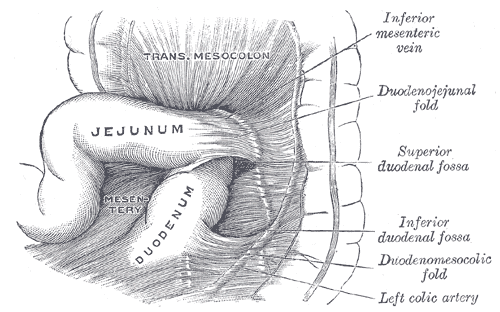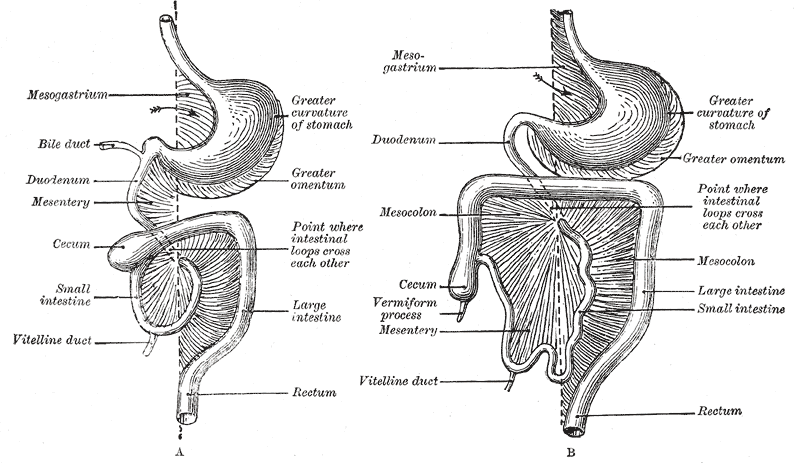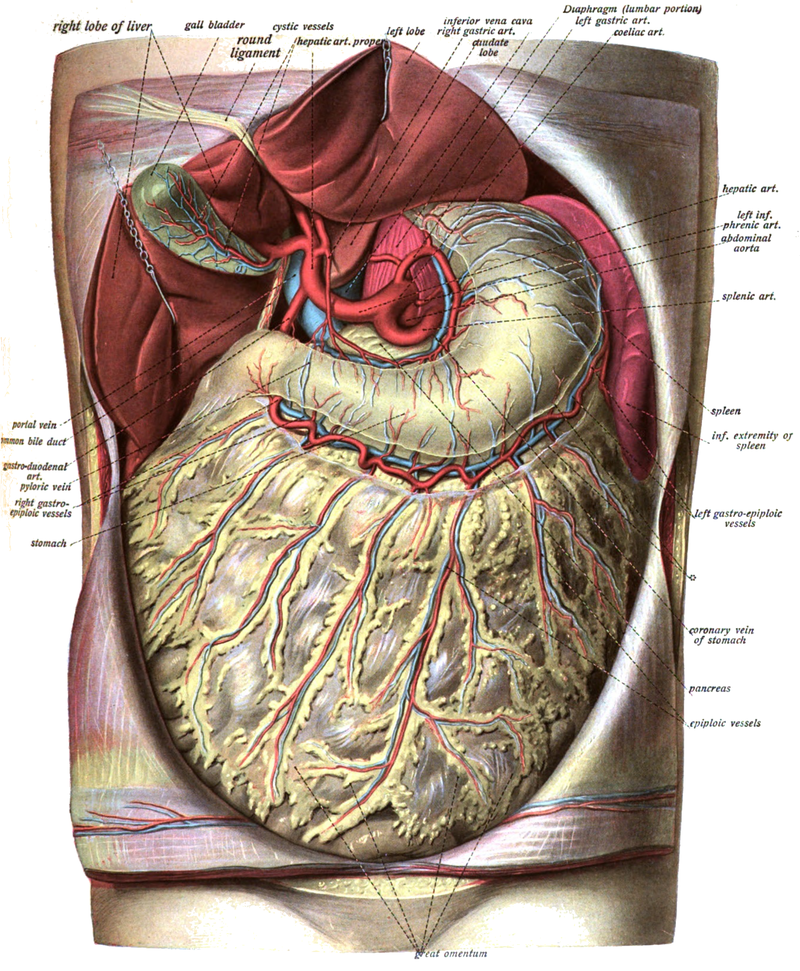
The nature of the mesentery is still a matter of investigation. It is currently being considered as a single, large lymphatic organ, but it has traditionally been considered a segmented, folded membrane. It attaches the abdominal organs, particularly the intestines, to the posterior (i.e., inner) abdominal wall.
It was thought to be a double layer of the peritoneum around the intestines, extending from the duodenojejunal flexure to the mesorectum (which is considered by some to be perirectal fat – fatty tissue surrounding the rectum – rather than an attached membrane). And it has been found to extend to the vertebral column from the mesenteric root.
The traditional segments of the mesentery (i.e., the mesenteries) in adults are:
- transverse mesocolon around the transverse colon
- sigmoid mesocolon around the sigmoid colon
- mesoappendix around the vermiform appendix
- small bowel mesentery suspending the jejunum and ileum – this was the original structure to be termed the mesentery, it arises from the mesenteric root.
The mesentery contains many lymph nodes and blood vessels and allows the intestines to overlap without becoming tangled.

In the embryonic stage of human development, the mesentery is also present around the stomach – termed the mesogastrium. But this disappears with development of the gastrointestinal system. The dorsal mesentery ends up forming the greater omentum, a curtain of fibrous visceral peritoneum that extends from the greater curvature of the stomach to the transverse colon. There is also the ventral mesentery that is part of the formation of the liver.

Disclaimer: This page is for informational and learning purposes only. It is not meant to diagnose or treat any medical condition and should not be used in place of speaking with a medical doctor or seeking treatment.
Aliconia Publishing, LLC and the author make any and all attempts to ensure the accuracy of the presented facts. If you find an issue with any information on these pages, please use the Contact page to alert us. The content is subject to change based on new information or to be updated with additional facts. The date of last change is stated under the main header.
Discover more from Just Facts
Subscribe to get the latest posts sent to your email.